Proper selection and management of hoses and nozzles is important to optimize efficient application of water in the wash-pack area, and to reduce the risk of cross-contamination. Using the wrong nozzle can significantly increase the time a task requires, and inferior quality equipment may need frequent replacement, costing time and money. Hoses and nozzles should be selected to safely and efficiently deliver the right pressure and volume of water for a variety of wash-pack tasks, including filling tanks, spraying bunched crops, washing and rinsing crop containers, and cleaning floors and other surfaces.
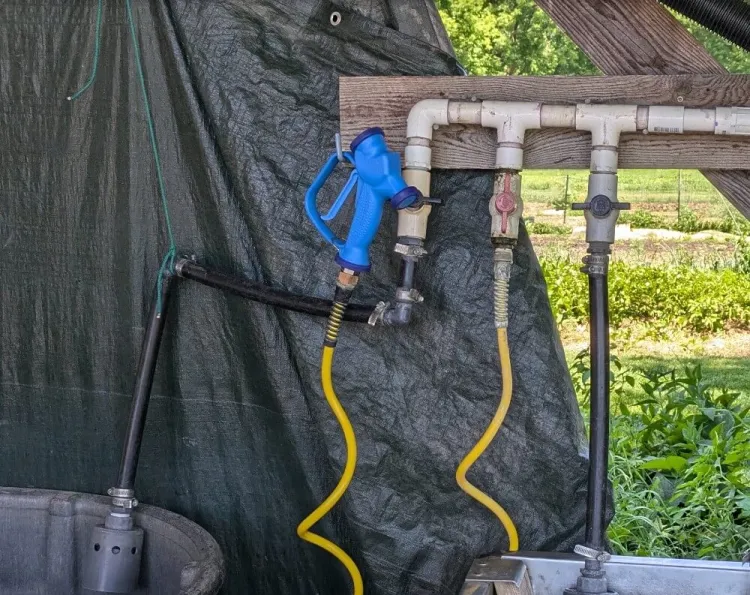
Design Goals
- Drainable, Durable and food-safe water delivery system a components.
- Ability to apply water at the right pressure and flow rates for distinct purposes such as filling tanks, rinsing containers and surfaces, and spraying vegetable.
- Moveable hoses, nozzles, wands, pipes, etc. stay off the ground.
- When not in use, moveable components are easily stored out of the way
- Water supply is easy to quickly turn on and off.
- Condensation that forms on cold pipes or hoses does not drip onto produce or clean surfaces.
Design Elements
- Drainable upsized water delivery pipes have 1 to 1.5-inch diameter with 100 to 200 psi rating.
- Dedicated nozzle(s) optimize tasks: wash pack rinsing (low pressure, high volume), tank filling (high pressure, high volume), and spraying (highest pressure, lower volume)
- Flexible, durable “garden” hoses are 5/8”, ¾”, to 1 “ diameter, and with 5/8 “ minimum diameter valves.
- All pipes and hoses are food-safe (poly propylene, rubber, polyurethane) to prevent contamination from leachate (avoid vinyl hose)
- Quick-connect fittings support fast and easy nozzle changes on individual hoses
- For multiple hoses, a trunk line splitter, or drainable valve manifold, allows independent control of each hose
- Hands-free nozzles optimize efficiency and ergonomics when spraying crops (e.g. ceiling drop filling hose, adjustable spray nozzle arm)
- Back-spray is managed to prevent cross contamination, and keep employees dry (e.g. outside spray station with over-hang back splash deflecting panel)
- Water-delivery is secured overhead, along walls or ceiling edges, avoiding areas directly over produce wash /pack zones.
- If needed, make-shift “gutters” are hung under sweating pipes to catch condensate over produce wash pack areas.
Benefits
- Risk of cross contamination reduced by keeping nozzles and hoses off the ground and by managing where condensate may drip
- Optimizing water pressure and volume for specific tasks increases wash-pack efficiency
- Hands-free water delivery increases efficiency and employee comfort
Photos
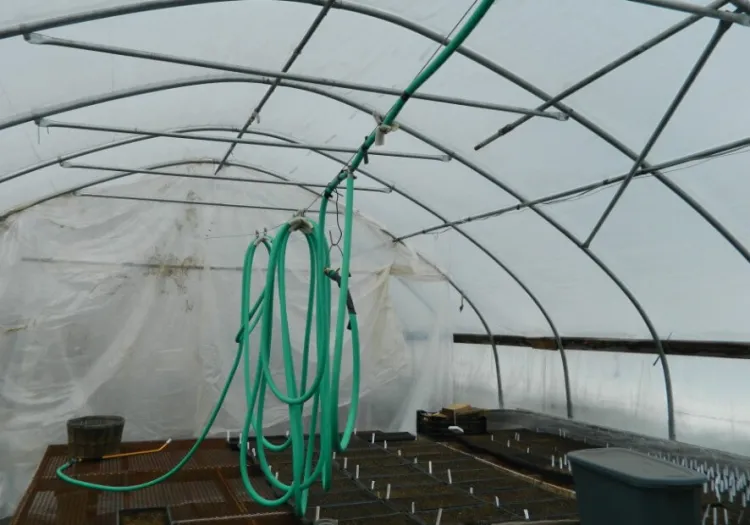
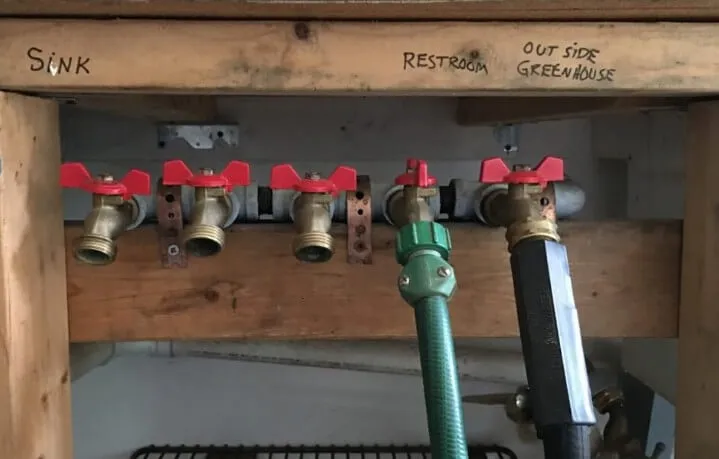
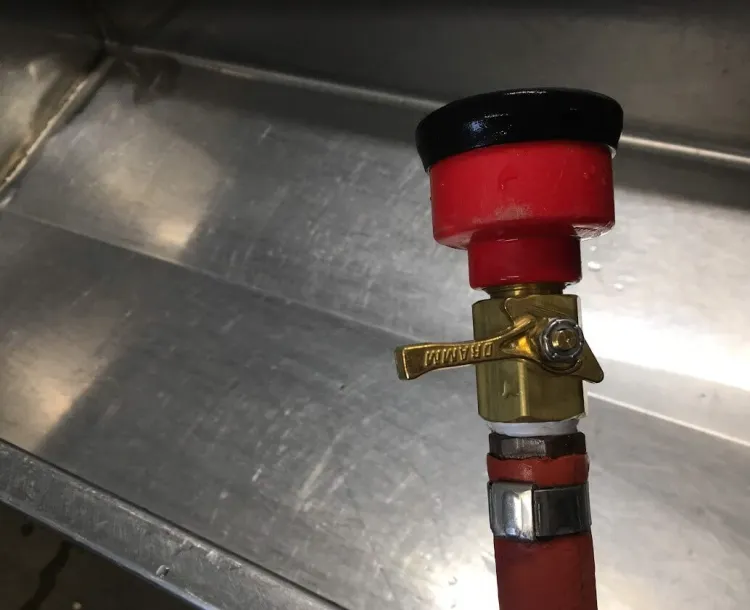
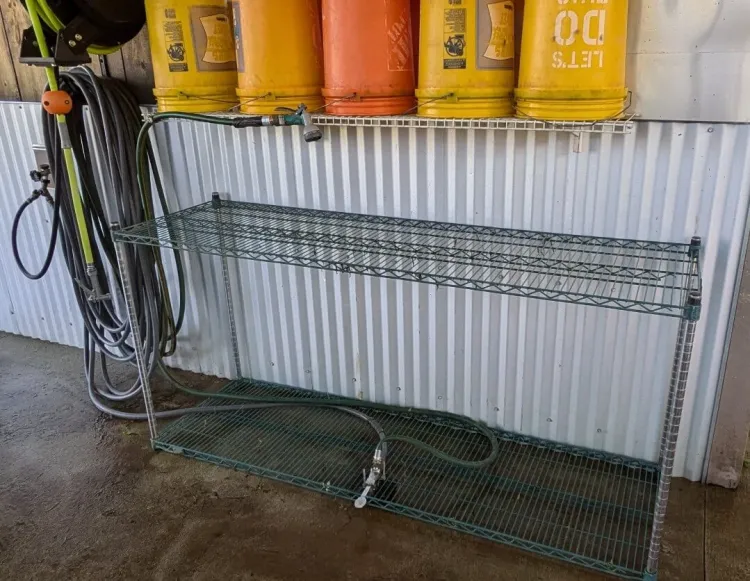
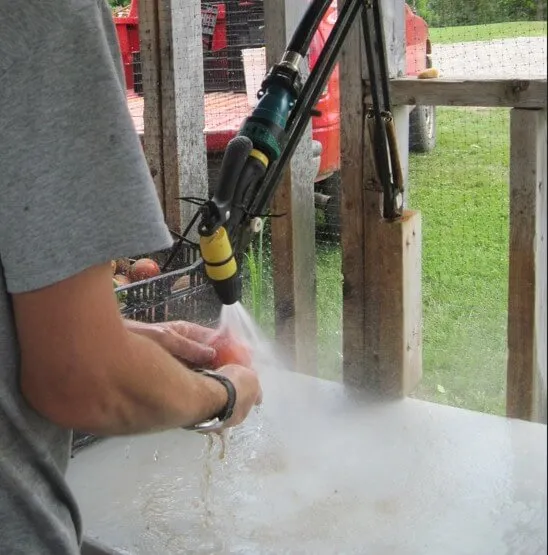
Authors: Hans Estrin and Vern Grubinger, UVM Extension
This work is supported by the Food Safety Outreach Program Name, project award no. 2023-70020-40688, from the U.S. Department of Agriculture’s National Institute of Food and Agriculture. Any opinions, findings, conclusions, or recommendations expressed in this publication are those of the author(s) and should not be construed to represent any official USDA or U.S. Government determination or policy.
